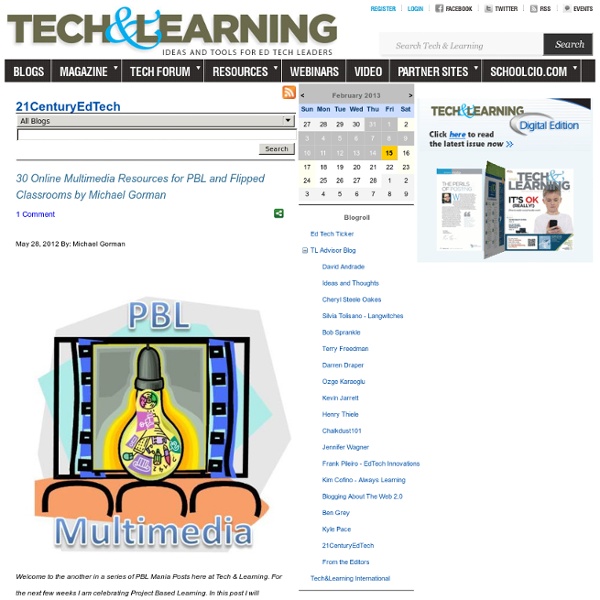- 30 Online Multimedia Resources for PBL and Flipped Classrooms by Michael Gorman

Type Fu - touch typing trainer, tutor and test
Google Drive and Docs for Teachers 2012
Learn Touch Typing Free - TypingClub
Kwiqpoll - Simple Web Polls
Rich Internet Applications from the Center for Language Education And Research (CLEAR) at Michigan State University
About Rich Internet Applications (RIA) The goal of the Rich Internet Applications project is to create tools that are informed by language acquisition research, and engage language learners in active learning. Using our Rich Internet Applications toolset, incorporating speaking and listening into your language class is easier and more flexible than ever! The tools can be used in many different ways: for in-class activities, student projects, homework, or assessment. The programs are free to use. The Rich Internet Applications tools run in your web browser.
snag.gy - paste images!
7 Mobile Apps Students Can Use to Never Lose Handwritten Notes Again
A couple of weeks ago on my Android blog I wrote about using the Google Drive app to create digital archives of handwritten notes. That post was prompted by a conversation that I had with a young lady entering her senior year at a high school in Rockingham County, North Carolina. That young lady explained to me that she preferred the act of handwriting her notes and outlines to typing them out on a keyboard. In a lot of ways I agreed with her because when I plan my keynote talks I always use pencil and scratch paper before creating and arranging slides. Try one or all of these seven apps ff you have students that prefer to handwrite their notes or if you prefer to handwrite your notes, but you're worried about those notes getting lost. InClass is a free iPhone and iPad app that could be a very useful tool for students carrying those devices. SugarSync is a cloud storage service that offers apps for iOS and Android.
- Top 10 Sites for Curating the Web
David Kapuler is an educational consultant with more than 10 years of experience working in the K-12 environment. For more information about his work, contact him at dkapuler@gmail.com and read his blog at cyber-kap.blogspot.com.
Browsing Blabbers
Blabberize Frontpage Make Browse My Stuff [ login / signup ] Blabbers: Newest Most Viewed Most Liked Users - 1 - 2 - 3 - . . . - 22379 - 22380 - Next lil wayne by roksalot101 just now Biome Animal 6 by rqj123 1 hour, 8 minutes ago Biome Animal 5 1 hour, 11 minutes ago Biome Animal 4 1 hour, 13 minutes ago Biome Animal 2 1 hour, 15 minutes ago 1 hour, 18 minutes ago Biome Animal 1 1 hour, 20 minutes ago Blabber by Brandon 96 5 hours, 11 minutes ago Blah by Pandadog 6 hours, 14 minutes ago © 2010 Mobouy inc - Terms of Service - FAQ - Buy Something - Blog - Contact.
My Maps
Custom Sign Generator Widgets - Thousands Of Web 2.0 Image Generators
Testmoz - The Test Generator
Related:
Related:



